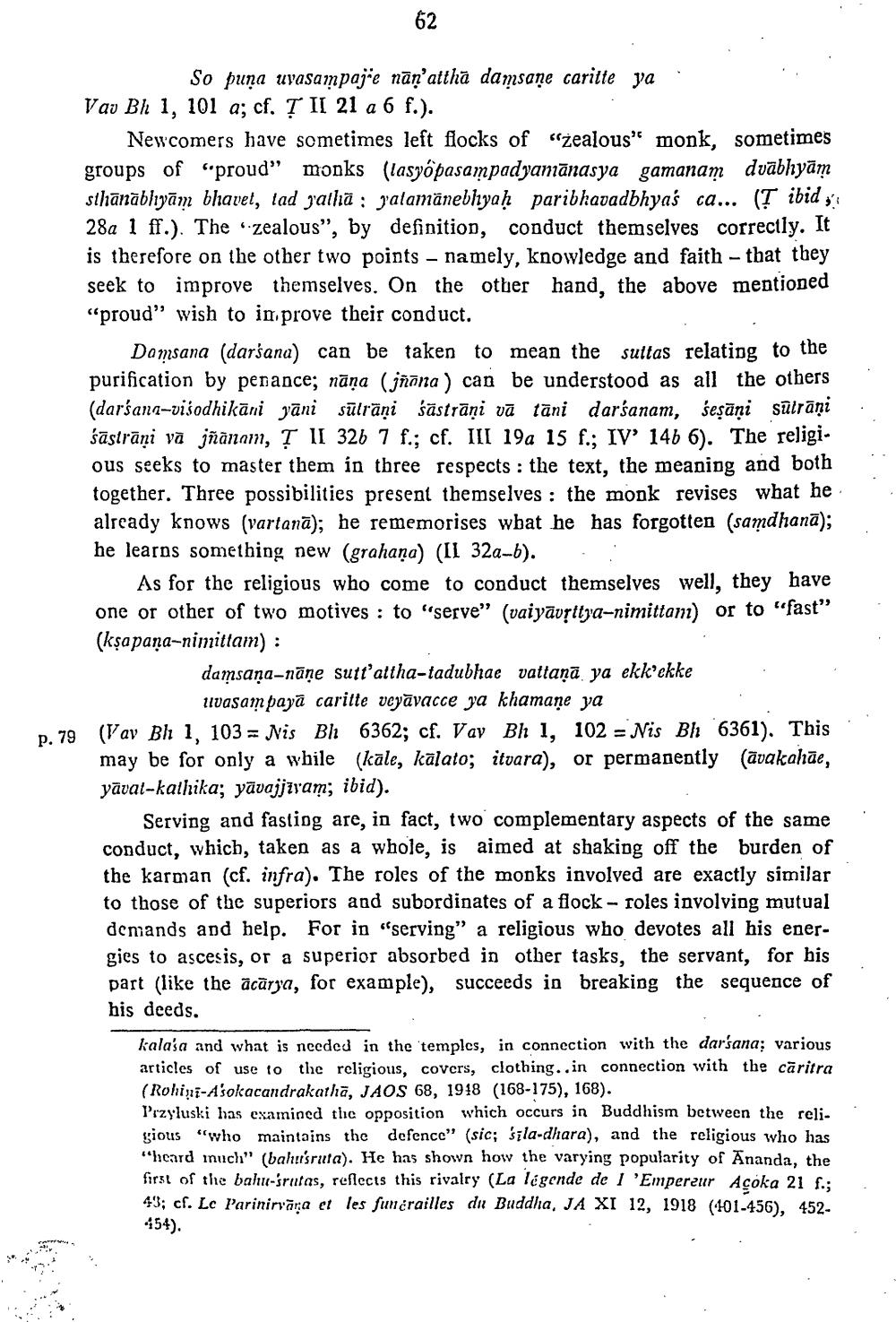________________
So puna uyasampaje mān'attha damsane caritte ya . Vav Bh 1, 101 a; cf. Ţ II 21 a 6 f.).
Newcomers have sometimes left flocks of “rzealous" monk, sometimes groups of "proud" monks (lasyópasampadyamānasya gamanam dvabhyām sthānābliyām bhavet, tad pallā : yalamānebhyaḥ paribhavadbhyas ca... (T ibid, 28a 1 ff.). The zealous”, by definition, conduct themselves correctly. It is therefore on the other two points - namely, knowledge and faith - that they seek to improve themselves. On the other hand, the above mentioned “proud” wish to in, prove their conduct.
Damsana (darśana) can be taken to mean the sultas relating to the purification by penance; nāņa (jñāna) can be understood as all the others (darśana-visodhikāni yani sülräni śāstrāni vā tāni darśanam, seşāņi sülrāņi śāstrāni vā jñānam, T II 326 7 f.; cf. III 19a 15 f.; IV' 146 6). The religious seeks to master them in three respects : the text, the meaning and both
Three possibilities present themselves : the monk revises what he
knows (vartana); he rememorises what he has forgotten (samdhana); he learns something new (grahaņa) (II 32a-6). .
As for the religious who come to conduct themselves well, they have one or other of two motives : to "serve" (vaiyāvsttya-nimittan) or to "fast" (kşapana-nimittam) :
damsana-nāne sutt'attha-tadubhae vattana ya ekk'ekke
uvasampayā caritte vcyāvacce ya khamane ya p. 79 (Vav Bh 1, 103 = Nis Bh 6362; cf. Vay Bh 1, 102 = Nis Bh 6361). This
may be for only a while (kāle, kālato; itvara), or permanently (avakahāe, yāval-kathika; yāvajjēram; ibid).
Serving and fasting are, in fact, two complementary aspects of the same conduct, which, taken as a whole, is aimed at shaking off the burden of the karman (cf. infra). The roles of the monks involved are exactly similar to those of the superiors and subordinates of a flock - roles involving mutual demands and help. For in "serving" a religious who devotes all his energies to ascesis, or a superior absorbed in other tasks, the servant, for bis part (like the acārya, for example), succeeds in breaking the sequence of his deeds.
.
kalasa and what is needed in the temples, in connection with the darśana; various articles of use to the religious, covers, clothing..in connection with the caritra (Rohini-Asokacandrakathā, JAOS 68, 1918 (168-175), 168). Przyluski has examined the opposition which occurs in Buddhism between the reli- gious "who maintains the defence" (sic; sīla-dhara), and the religious who has "hcard inuch" (bahu'sruta). He has shown how the varying popularity of Ananda, the first of the bahu-'srutas, reflects this rivalry (La légende de l'Empereur Acoka 21 f.; 43; cf. Lc Parinirvara et les funérailles du Buddha, JA XI 12, 1918 (101-456), 452454).




